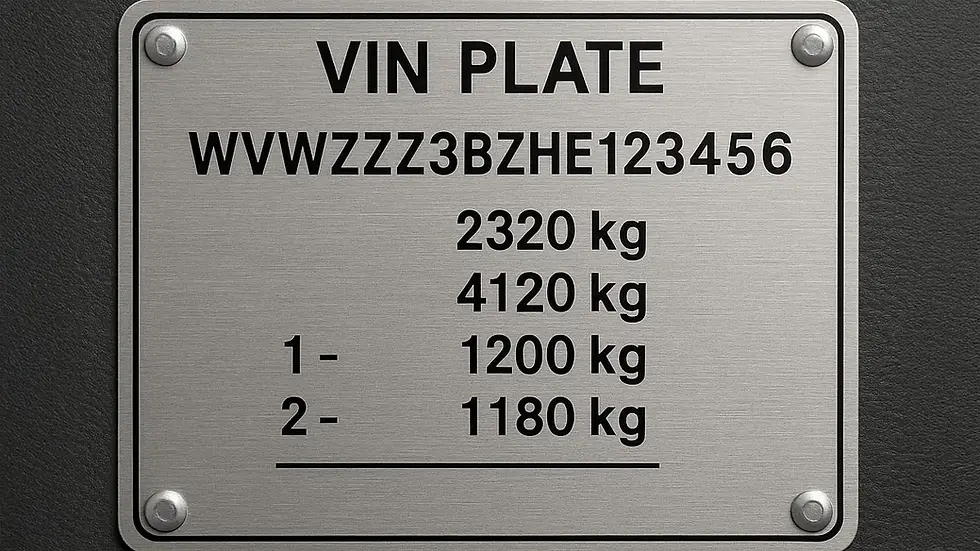What Are Maximum Axle Loads? How to Stay Safe & Legal Towing
- Brent

- Jun 16
- 2 min read
When it comes to towing a trailer, most folks look at overall towing capacity and call it a day. But if you really want to stay legal (and avoid blowing out a suspension), there’s another figure you need to pay attention to: maximum axle loads.
Let’s break it down in plain English.
What Is an Axle Load?
Every vehicle has two or more axles — front and rear — and each axle has a maximum weight it can safely carry. These are called axle loads.
So, for example:
The front axle might have a max load of 1,200 kg
The rear axle might have a max load of 1,400 kg
Those numbers tell you how much weight can be pushing down on each axle — including passengers, fuel, gear in the boot, and any trailer weight that’s transferred to the car.
Where Do I Find My Vehicle’s Axle Loads?
Easy — check the VIN plate (usually found under the bonnet or on the driver’s door frame). You’ll see four numbers:
Gross Vehicle Weight (GVW)
Gross Train Weight (GTW)
Front axle max load
Rear axle max load
The third and fourth numbers are your axle load limits.
Why Axle Loads Matter When Towing
Even if your overall towing capacity is within legal limits, you can still run into issues if one axle is overloaded. That can lead to:
Unsafe braking
Poor steering control
Increased tyre wear
Risk of suspension damage
Failing roadside checks (and getting fined)
In short: don’t overload your rear axle just because your car can technically pull the trailer.

What Adds Weight to the Rear Axle?
A few things that can overload the rear axle without you realising:
Heavy loads in the boot
Downward pressure from the trailer’s hitch (called nose weight)
Extra passengers or dogs in the back seats
Roof boxes (yes, even those)
Always consider how your load is distributed — not just how much it weighs overall.
How to Stay on the Safe Side
Check your VIN plate for axle limits
Weigh your loaded vehicle if you’re unsure (many public weighbridges will do this)
Balance the load — spread heavy gear between axles where possible
Don’t overload your trailer either — that weight still ends up pressing down somewhere
Final Thought: Axle Loads Keep You Legal (and Safe)
Towing isn’t just about brute strength — it’s about balance. So before you load up the trailer and hit the road, take a second to check your axle loads.
Because a well-balanced tow is a smooth, safe, and legal one.
Need a trailer that fits your setup?
-Trailer Sheriff Brent




Comments